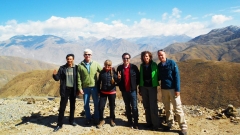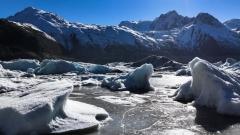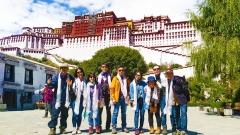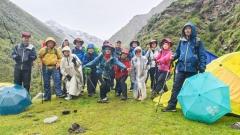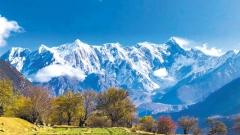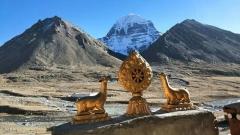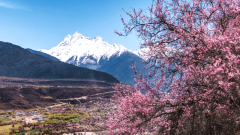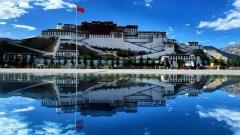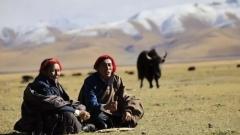Why Mount Kailash Should Be On Your Travel List? Mount Kailash and Lake Mansarovar are among the most sacred and dramatic landscapes on Earth – a pilgrimage destination that draws Buddhists, Hindus, Jains and spiritual seekers from around the globe. This guide walks you step-by-step through the most popular routes from the USA, visa and permit requirements, recommended itineraries, timing, packing and health advice – everything you need to plan a smooth, meaningful Kailash Mansarovar yatra.
How To Get To Mount Kailash From The USA
There are two practical international approaches for travelers from the United States: enter Tibet via mainland China (the most commonly recommended option), or enter via Nepal. Each has advantages depending on your flight preferences, time, budget and travel style.
Via Mainland China (Recommended)
Most American pilgrims fly first to a major Chinese gateway (Beijing, Shanghai, Chengdu, Guangzhou or Chongqing), then connect to Lhasa (Gonggar Airport) by domestic flight or by the Qinghai–Tibet Railway. From Lhasa you can either travel overland to the Ngari (Ali/Darchen) region or take a domestic flight to Ngari Kunsha (Gunsa) Airport and continue by road to Darchen, the staging town for the Kailash area.
Typical long-haul flight patterns from the U.S.:
- East Coast (e.g., New York/Washington): direct services to Beijing are common (roughly 16–18 hours, depending on routing).
- West Coast (e.g., Los Angeles, San Francisco): multiple non-stop or single-stop options to Beijing, Shanghai, Chengdu and Guangzhou (13–15 hours typical).
- Cities like Seattle and Detroit often connect via major hubs (Shanghai, Beijing, or via transfer cities in Asia).
Once in China, flights to Lhasa from Beijing take around 4–5 hours; flights from Chengdu or Chongqing are shorter (roughly 2–3 hours). Trains to Lhasa are an option for those wanting the scenic ride and gradual acclimatization — expect journeys of roughly 34–50 hours depending on origin. From Lhasa you can either take a roughly 2-hour flight to Ngari (Gunsa) or begin the classic overland traverse toward Darchen, which gives better acclimatization and deeper cultural stops.
Via Nepal
Many pilgrims choose Kathmandu as their international entry point. Flights from the USA to Kathmandu typically involve at least one stop (flight time ~18–22 hours depending on routing). From Kathmandu there are two primary ways into the Kailash region:
- Overland via Gyirong (or other crossings): Cross the Nepal–Tibet border at Gyirong or Zhangmu and continue by road into Tibet; the drive to Darchen takes multiple days, offering beautiful mountain scenery and a gradual ascent.
- Air/Heli-assisted routes: Fly or take domestic connections (e.g., to Nepalgunj and onward charters/helicopter legs) to reach remote border points and then transfer overland to Darchen. Helicopter charters can be expensive and seasonal.
If entering Tibet from Nepal, you will normally apply for a China group visa in Kathmandu (see “Permits & Visas” below).
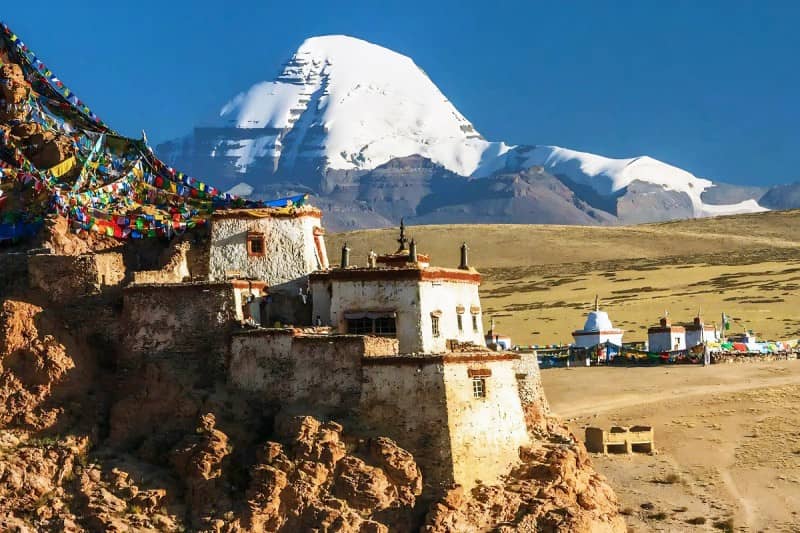
Mount Kailash
Key Airports & In-Country Transfers of Kailash
- Lhasa Gonggar International Airport (LXA): The main gateway for most Tibet inbound flights; from Lhasa you can travel overland toward Ngari or take domestic flights to Ngari (Gunsa).
- Ngari Kunsha (Gunsa) Airport (NGQ): The closest airport for Mount Kailash, located in Ngari Prefecture. There are scheduled flights between Lhasa and Ngari that typically take around two hours; schedules can be seasonal and limited to a few flights per week, so book early and confirm timings with your operator.
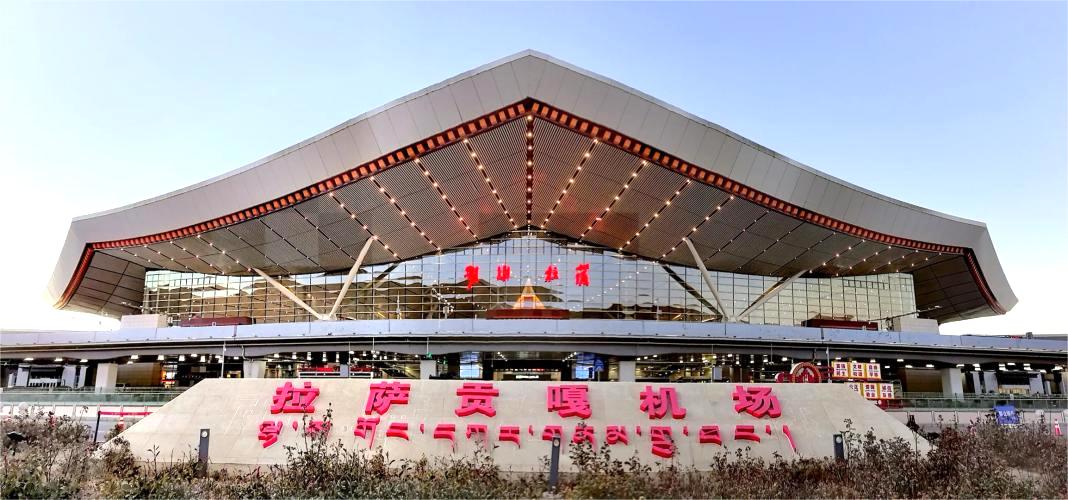
Lhasa Gonggar International Airport
Permits & Visa Requirements – What U.S. Citizens Must Know
Travel to Tibet is tightly regulated. U.S. passport holders (including NRIs residing in the USA) must ensure they have the correct visas and permits before entering Tibet.
Tibet Travel Permit (Mandatory)
All foreign travelers wishing to enter Tibet must have a Tibet Travel Permit (sometimes called a Tibet Entry Permit). This document is checked at airport or train boarding, at hotels and at major attractions. Your Tibet travel agency will apply for the permit on your behalf; submit scanned passport and visa copies well in advance (many agencies ask for at least 20 days’ notice). Failure to present a valid Tibet Travel Permit can result in airline/train denial and refusal of local travel.
China Visa vs China Group Visa
- China Tourist Visa (single traveler via mainland China): If you fly into mainland China first, you’ll need a standard Chinese visa (apply at a Chinese consulate in the U.S. prior to departure). Many travelers bring an invitation/itinerary from a licensed travel agency to support the application.
- China Group Visa (entering from Nepal): If you begin your journey in Nepal and seek direct entry into Tibet, you’ll likely apply for a China group visa in Kathmandu. A licensed Tibet travel agency will arrange an official invitation from the Tibet Tourism Bureau (group visas generally require a minimum number of travelers and specific documentation). Processing time in Kathmandu is typically a few working days, so plan accordingly.
Other Special Permits
For the Ngari (Ali) region and the Kailash area, additional regional permits may be required — for example, Alien Travel Permits and military permits. These documents are handled by your Tibet agency and are an essential part of your tour paperwork.
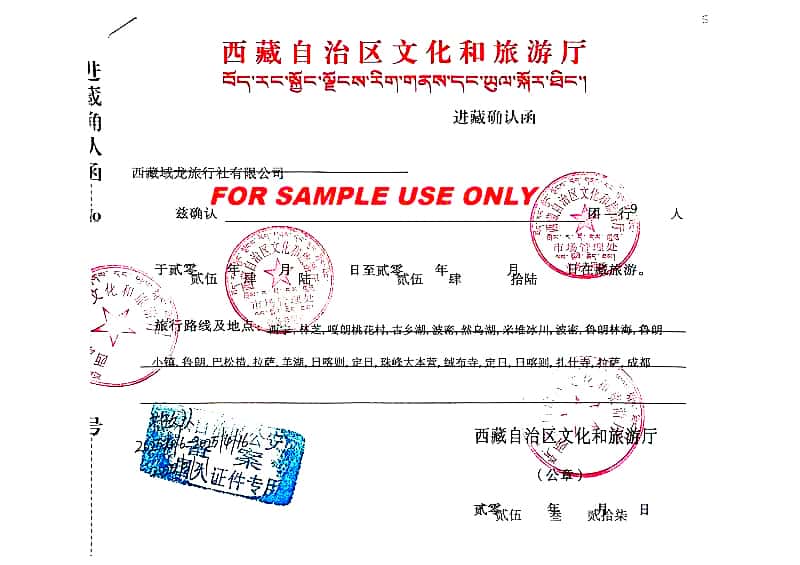
Tibet Travel Permit
Recommended Itineraries From The USA
Below are popular itinerary templates. Customize them for pace, budget and acclimatization needs.
Lhasa → Mount Kailash Overland (Classic Route) – 12–15 days
- Day 1–2: Fly into Lhasa (Gonggar). Rest and acclimatize in Lhasa (3,650 m). Gentle sightseeing: Potala Palace, Jokhang Temple, Barkhor Street.
- Day 3–5: Overland to Shigatse with stops (Drepung/Sera if missed in Lhasa), then toward Everest Base Camp for a cultural and scenic detour (optional). Gradual ascent helps acclimatization.
- Day 6–9: Drive across the high plateau via Saga toward Lake Mansarovar and Purang; stay overnight by Lake Mansarovar and perform traditional puja or a cleansing dip for interested pilgrims.
- Day 10–12: Arrive at Darchen for the Kailash parikrama (kora). The kora can be a 3-day trek around the mountain (pilgrim route), or a simplified vehicle-assisted circuit for those less able to trek.
- Day 13–15: Return to Lhasa or continue overland to Gyirong and cross into Nepal (Kathmandu) depending on your outbound plans.
This classic route provides time to acclimatize, experience Tibetan culture, and reduces altitude-related risk compared with a direct rush to the Ngari region.
⇒ 15-Day Mount Kailash Pilgrimage Tour: Ngari, Lake Manasarovar, Lhasa, E.B.C. & More
Best Time To Travel to Mount Kailash
The ideal season to undertake the Kailash Mansarovar yatra is May through October, with peak windows being late spring (May–June) and early autumn (September–October). Those months usually offer more stable, clear weather, better road conditions and more comfortable temperatures — prime conditions for trekking and photography. Outside these months, temperatures drop sharply and road or permit access may be restricted.
Health, Altitude & Safety of Mount Kailash – Practical Advice
Can U.S. Citizens Travel Independently?
No. Independent travel in Tibet is currently not permitted for international tourists. All foreign visitors must travel with a licensed local travel agency and be accompanied by a registered guide for the duration of their stay in Tibet. Book your Kailash trip through an experienced operator who will arrange permits, guides, vehicles and contingency plans.
Altitude Sickness: Prevention & Response
Mount Kailash and Lake Mansarovar sit very high — much higher than most places in the U.S. To reduce risk of acute mountain sickness (AMS):
- Acclimatize gradually: Spend 1–2 days in Lhasa (or similar altitude) before pushing higher. The classic overland route is specifically designed for gradual acclimatization.
- Stay hydrated and rest: Avoid heavy exertion on arrival. Eat carbohydrate-rich foods and limit alcohol and smoking.
- Medications & oxygen: Carry prescriptions (e.g., acetazolamide if recommended by your doctor) and consider portable oxygen or oxygen canisters if you have prior respiratory or cardiac risk factors. Travel insurance with emergency evacuation coverage is strongly advised.
- Know red flags: Severe headache, persistent vomiting, confusion, shortness of breath at rest — seek medical help and descent immediately.
Who Should Avoid This Trip?
People with uncontrolled hypertension, severe cardiovascular disease, advanced respiratory illness, or those over 70 with significant medical issues should avoid high-altitude pilgrimage or consult their doctor closely. Similarly, toddlers and very young children are generally not recommended for such high elevation travel.
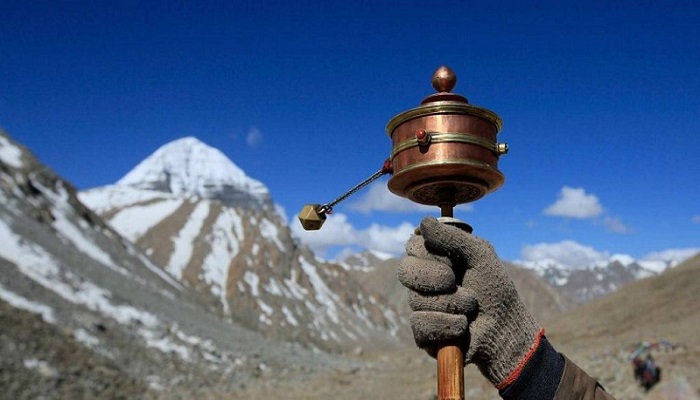
Mt Kailash Yatra
What To Pack For A Kailash Yatra
- Layered clothing: Fast-dry base layers, insulating mid layers, and a windproof/waterproof outer shell. Temperatures swing greatly between day and night.
- Footwear: Broken-in trekking boots with good ankle support plus comfortable camp shoes. Wool or technical socks.
- Sun protection: High-SPF sunscreen, sunglasses with UV protection, lip balm, a wide-brim hat. The UV is intense at altitude.
- Health & monitoring: Personal medications, basic first-aid kit, blister care, anti-diarrheal meds, altitude medication if prescribed, and a wrist pulse oximeter or watch to monitor blood oxygen if you want extra reassurance.
- Accessories: Gloves, warm hat, thermal flask, headlamp, small daypack for the kora, and extra batteries/power banks (power can be limited in remote areas).
- Documents: Passport (valid at least six months), Chinese visa or group visa (as applicable), passport photos, and final copies of all permits (your agency will handle most of this).
Practical Tips & Traveler Etiquette
- Book with an experienced Tibet operator: They handle permits, local logistics, guide services and medical contingency plans.
- Respect local customs: Dress modestly at monasteries, ask before photographing people, and follow the lead of local spiritual practitioners during pujas and rituals.
- Cash & connectivity: ATMs are limited in remote regions. Carry enough Chinese RMB in smaller denominations. Expect limited phone/data service outside major towns.
- Flexible mindset: Weather, permit processing or flight schedules can create delays — build flexibility into your plans and travel with patience.
Let Us Help You Plan Your Kailash Yatra
A Kailash Mansarovar yatra is more than a photo opportunity; it’s a physical, cultural and spiritual passage. Slow down where you can: spend time at Lake Mansarovar, attend local rituals, and allow the landscape to sink in. With proper preparation — the right permits, sensible acclimatization and a reliable local operator — this pilgrimage can be a safe, life-enriching journey.
If you’d like expert help planning a Kailash Mansarovar yatra from the USA — choosing the right route, arranging permits (Tibet Travel Permit, regional permits and visas), booking flights and local logistics — China Dragon Travel has extensive experience organizing safe, authentic pilgrimage tours in Tibet. Our travel consultants can design an itinerary tailored to your schedule, fitness level and travel preferences, and handle all permit processing and ground arrangements so you can focus on the pilgrimage itself. Contact China Dragon Travel for a personalized consultation and let us walk you through every step of this extraordinary journey.



